MXA RACE TEST: THE REAL TEST OF THE 2025 GASGAS MC450F
 THE GEAR: Jersey: O’Neal Hardwear Pants: O’Neal Hardwear Helmet: 6D Boots: Sidi Crossair
THE GEAR: Jersey: O’Neal Hardwear Pants: O’Neal Hardwear Helmet: 6D Boots: Sidi Crossair
Q: FIRST AND FOREMOST, IS THE 2025 GASGAS MC450F BETTER THAN THE 2024 MC450F?
A: Yes, light years better. As most people know, GasGas is platform-shared with both KTM and Husqvarna motocross bikes. That means that the GasGas has access to the latest frames, engines, components and technology; however, it doesn’t get everything that KTM and Husqvarna have—and that’s the rub.
Q: HOW DID GASGAS MOTORCYCLES END UP BEING MADE IN AUSTRIA?
A: GasGas was a Spanish motorcycle brand that specialized in trials bikes and off-road motorcycles. The company did not make motocross models. GasGas Spain fell on hard times and subsequently changed hands more than once, but the company was always on the verge of bankruptcy no matter who owned it. Finally, in 2020, GasGas’ owner at the time, Black Toro Capital, was at its wits’ end and wanted to unload the brand. That is when KTM owner Stefan Pierer stepped in. Stefan Pierer had also stepped in to buy Husqvarna in 2013 when then-owner BMW decided to abandon off-road motorcycles.
MXA gives Stefan Pierer credit for keeping Husqvarna and GasGas from ending up in the dust heap of European motorcycle brands that withered under the Japanese onslaught of the 1980s. Lots of critics of Pierer’s purchases felt that he should have given those brands financial help and left them in their respective countries, which would have been Italy for Husky and Spain for GasGas. Instead, Stefan Pierer didn’t want any of the Husqvarna (aka BMW) or GasGas off-road bikes. He was only interested in saving the brand names.
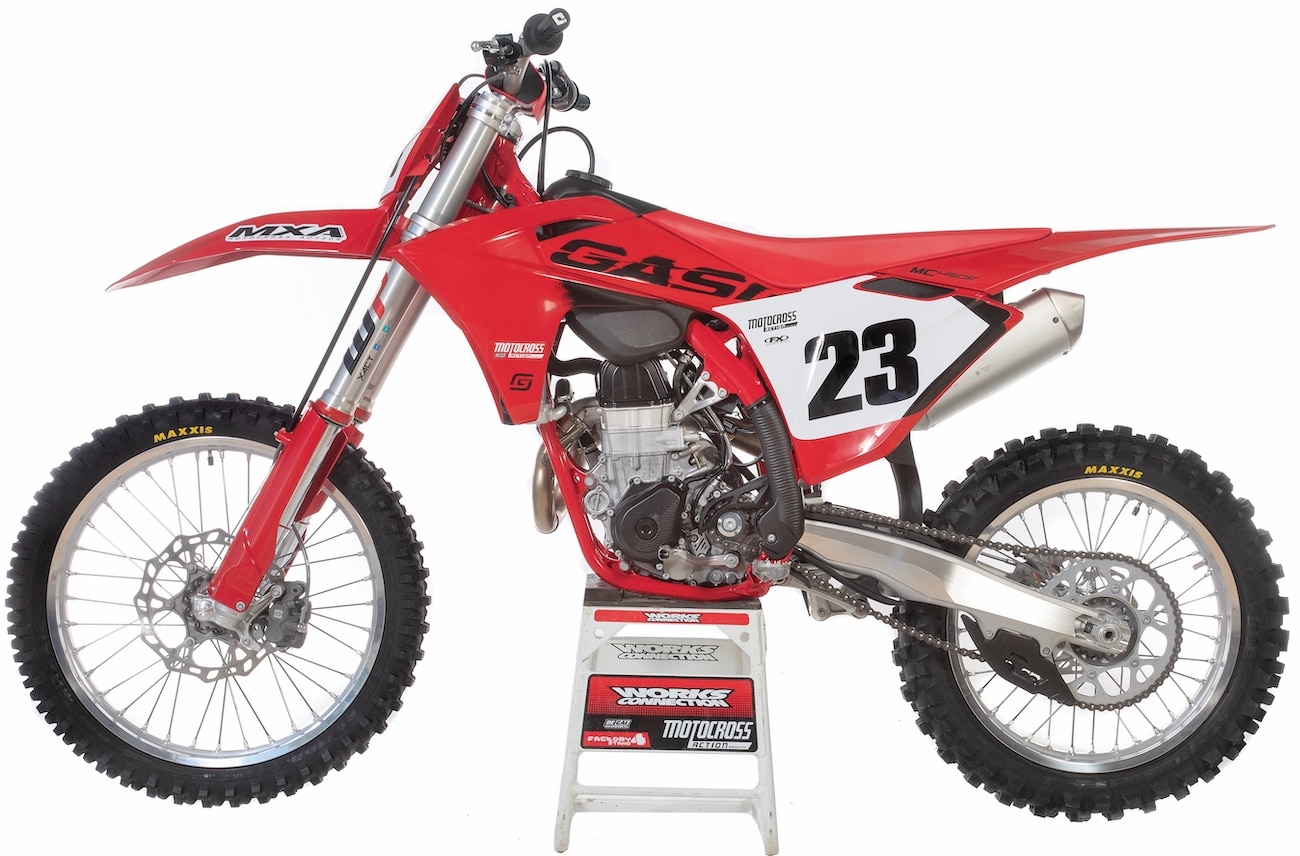
Once the GasGas brand name was wrapped up, Pierer added GasGas to his Austrian-built three-brand lineup. As for what happened to the remnants of the Spanish-built GasGas motorcycle brand, that technology was bought by Spanish-brand Rieju, who re-branded the existing 2020 GasGas bikes as Riejus.
Many GasGas loyalists hoped that KTM would take the GasGas marque and develop an all-new bike that was vastly different from KTMs and Huskys. They may have wished for that, but it would have been a bad business decision. To manufacture an all-new GasGas motorcycle lineup would have required all-new engine molds, extensive R&D time and lengthy delays in getting a totally new bike on the showroom floors.
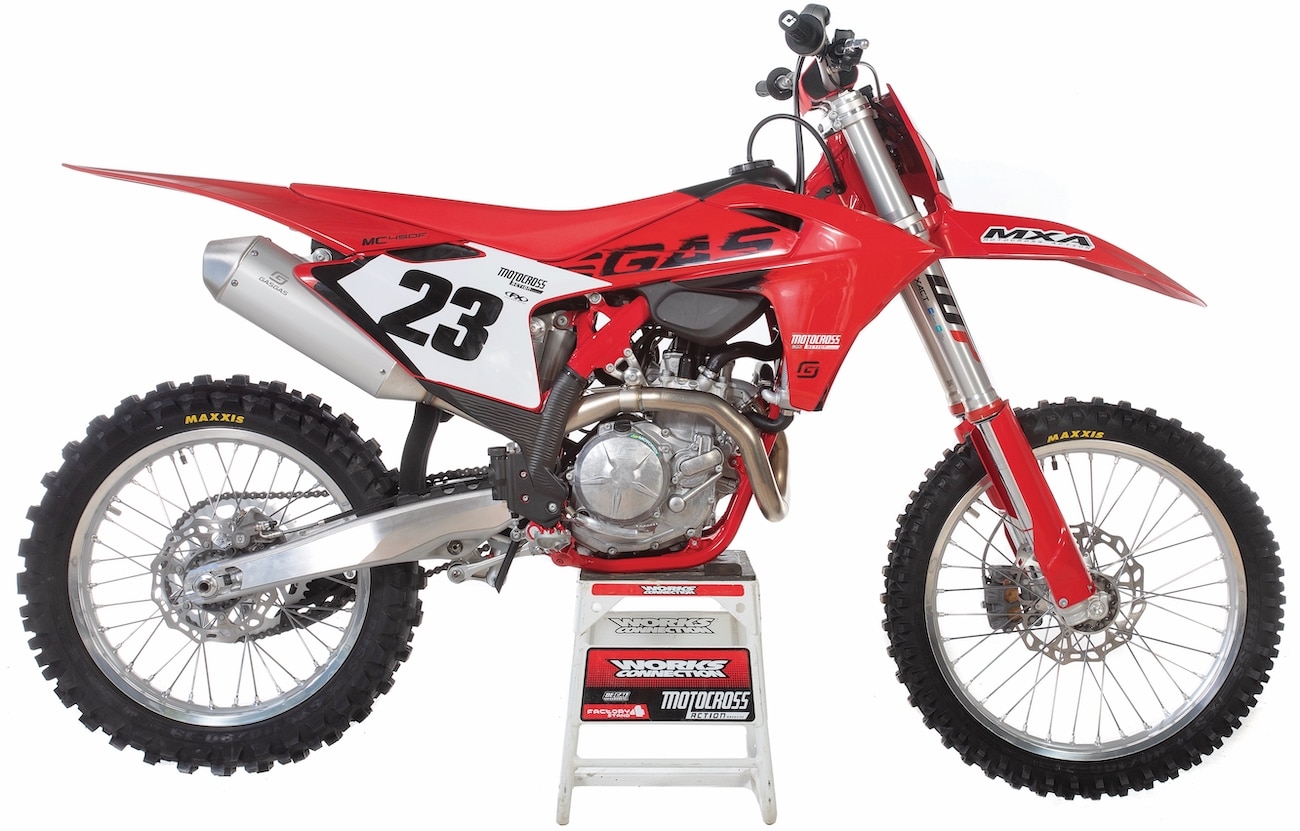
Instead, the best economy-of-scale decision for GasGas was to duplicate the existing frames, engines, suspension, hubs, swingarm, throttle bodies, transmissions, electronics and subframes from KTM—and wrap the end product in red plastic. “Platform-sharing” is common practice in the automobile world and even between models at many motorcycle brands. Need examples? Virtually every Honda CRF250 is based on most of the components from the existing CRF450. The same holds true for the Kawasaki KX250, Yamaha YZ250F and Suzuki RM-Z250. Additionally, Honda’s, Yamaha’s and Kawasaki’s off-road bikes are not stand-alone products. They are in-house motocross bikes that are modified with 18-inch rear wheels, larger gas tanks, and sometimes softer suspension and different transmissions.
Q: WHAT ARE THE STRANGE ANOMALIES OF THE GASGAS PRICE WAR?
A: In 2021 when the new GasGas was introduced, it was no secret that taking advantage of KTM’s large parts inventory meant that a GasGas off-road bike could be produced much quicker and cheaper. After all, KTM had a ready-made stockpile of frames, engines, wheels and suspension, and had already paid for the R&D and endurance testing on the components. The strategy was to offer the GasGas MC450F as an affordable version of the KTM 450SXF.
The marketing plan was simple—buyers could get 90 percent of a KTM 450SXF for the same price as the “Big Four” Japanese brands. The 2021 GasGas price was set at $9599, which was the same price as a 2021 CRF450 and Yamaha YZ450F, $200 less than a Kawasaki KX450, $700 less than a KTM 450SXF, and $800 less than a Husky FC450. The price break was a great launching pad for GasGas in America.
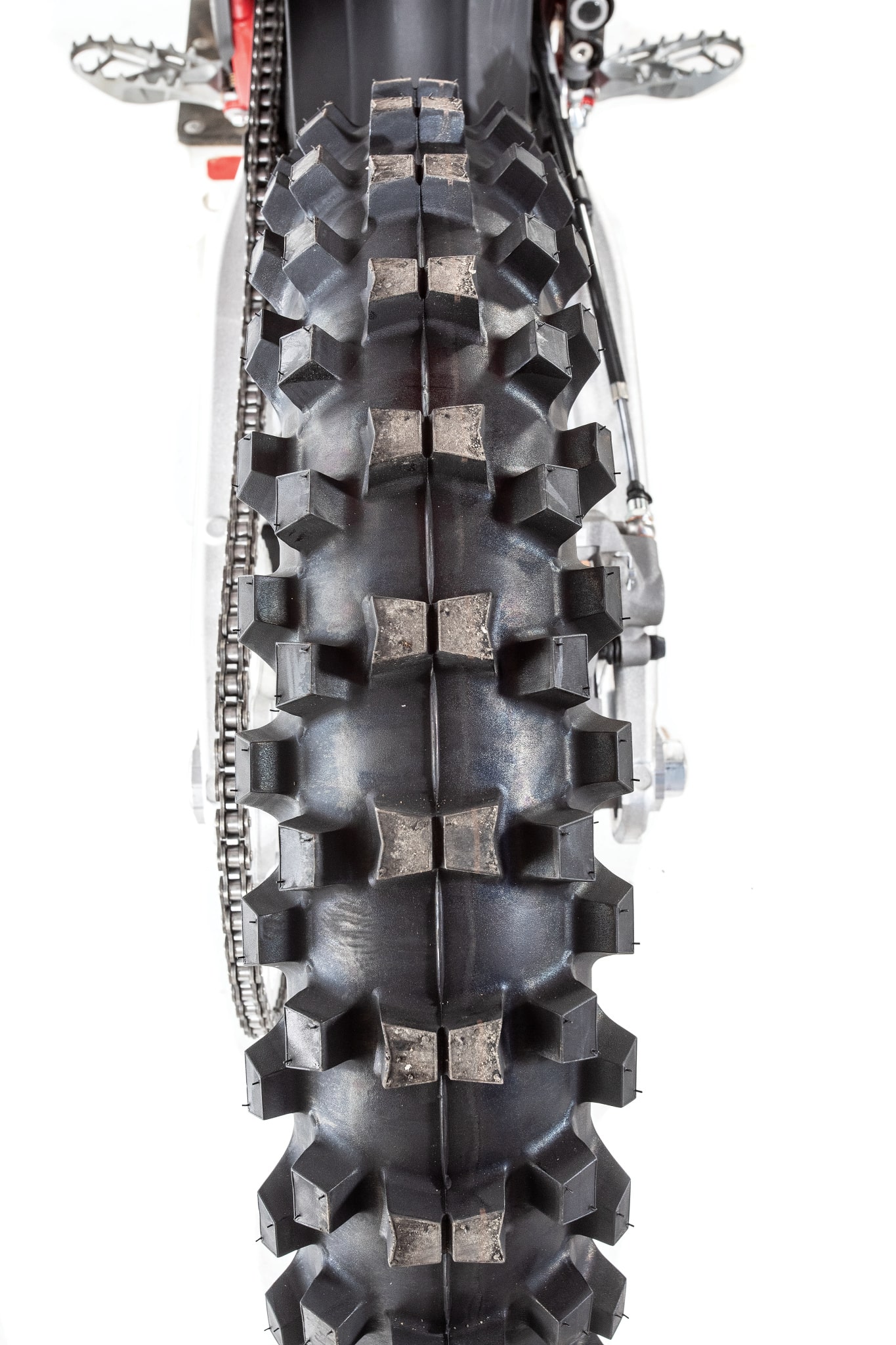 Maxxis is the GasGas tire supplier. KTM and Husqvarna run Dunlops.
Maxxis is the GasGas tire supplier. KTM and Husqvarna run Dunlops.
Of course, compromises had to be made on the production line, but in 2021, those were limited to the map switch, exhaust system, tires, handlebars and triple clamps. The GasGas was marketed and priced to steal customers away from Honda, Suzuki, Yamaha and Kawasaki. It was a great idea!
But, Stefan Pierer couldn’t hold the price down for long. By 2023, the MSRP of the GasGas MC450F jumped up to $10,199, and by 2025 the price jumped to $10,499. That is a $900 price increases over five model years. Worst of all, Honda only raised its MSRP of the CRF450 by $100 from 2021 to 2025. GasGas was no longer worthy competition at the cash register against the CRF450 ($9699), YZ450 ($9999) or RM-Z450 ($9299). It was only competitive against the 2025 Kawasaki KX450 ($10,499). Who did GasGas beat in the price wars by a large margin? The 2025 KTM 450SXF ($11,299) and 2025 Husqvarna FC450 ($11,399).
Q: WHAT MAKES THE 2025 GASGAS MC450F BETTER THAN THE 2024 MODEL?
A: First of all, in 2025, GasGas benefited from a boatload of improvements and updates that KTM had already tested and proven on the Factory Edition models. Here is the list: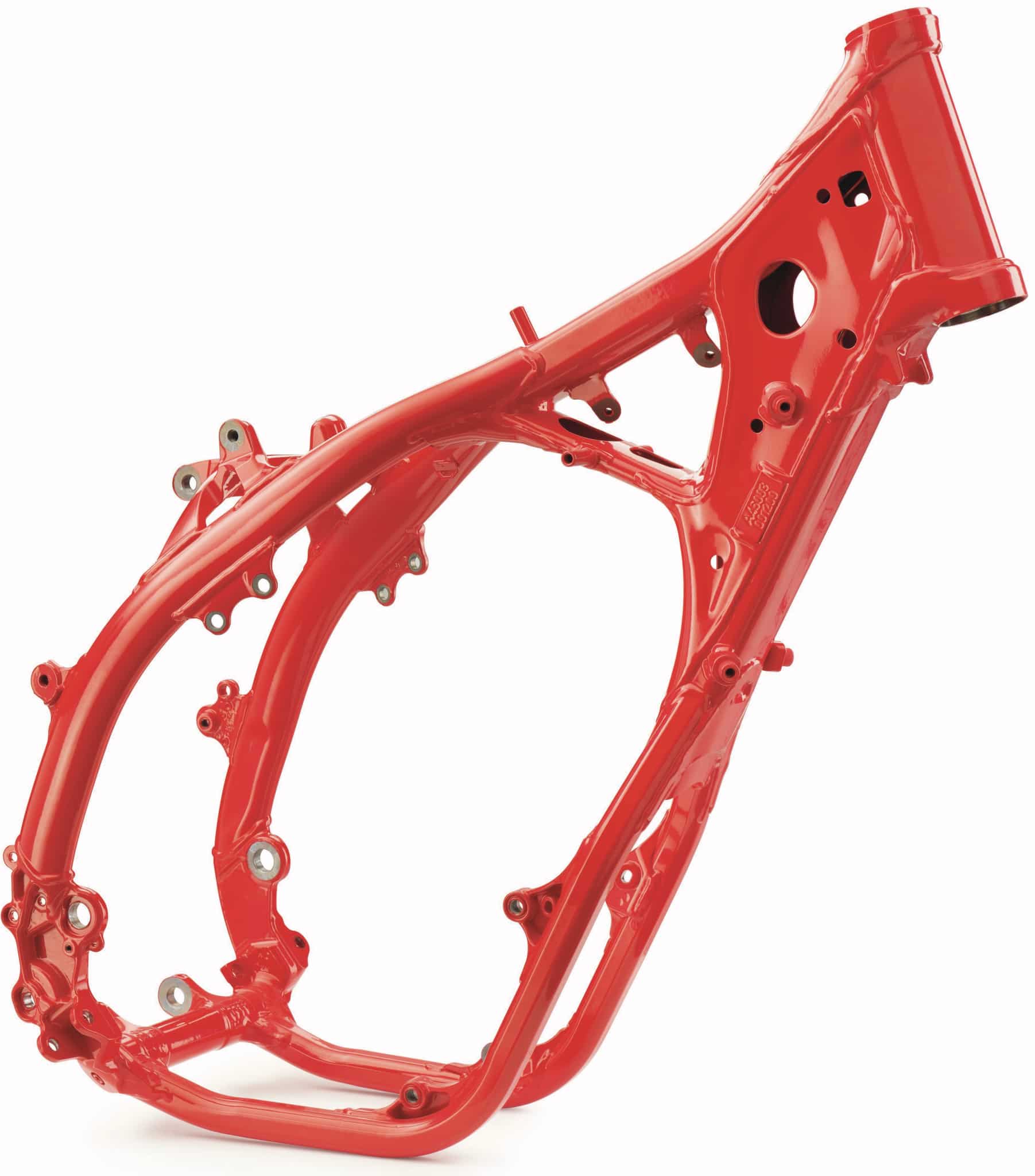
(1) Frame. The 2023–2024 KTM and Husqvarna frames were too stiff, harsh and unforgiving. Job one for 2025 was to engineer a plusher chassis with five changes. GasGas was in line to reap the benefits in 2025.
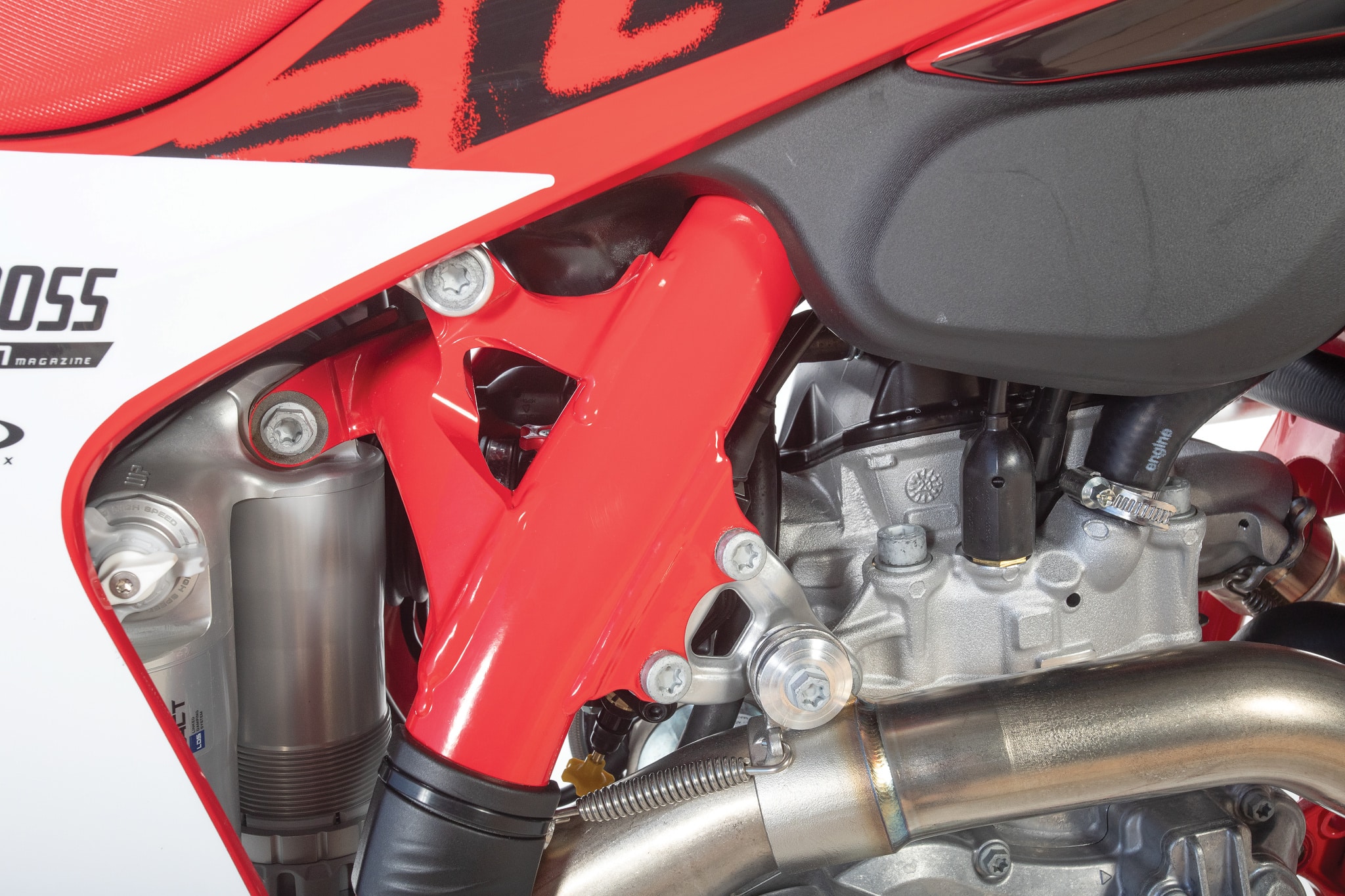 The shock tower has a relief hole cut into both sides to feed flex into the frame.
The shock tower has a relief hole cut into both sides to feed flex into the frame.
(2) Shock tower. The previous shock tower was overbuilt. For the 2025 GasGas MC450F, the engineers designed large relief holes that were cut into both sides of the shock tower to feed flex into the frame.
(3) Forged backbone plates. In 2023 and 2024, the KTM and Husqvarna frames had thick, forged gussets welded to the top of the frame’s backbone and wrapped around the steering head. Since GasGas didn’t use that frame, sticking instead to the 2022 frame, they didn’t suffer from the stiffness of the forged gussets. Now that the 2025 GasGas shares the same frame as the 2025 KTM and Husky, it gets the all-new, updated, thinner gussets that are designed to soften the frame longitudinally. Lucky ducks!
(4) Engine position. In 2023, KTM tilted its engine 2 degrees rearward and moved it down 3mm to lessen the frame’s tendency to squat under acceleration. For 2024-2025, the GasGas MC450 gets the same anti-squat engine position. The anti-chain torque design makes the chassis better in consecutive whoops, rutted corners and any time the throttle is held wide open.
(5) Frame tubes. On each side of the 2025 GasGas chassis, from the shock tower to the footpeg brackets, there are two symmetrical frame tubes. They stiffen the chassis both longitudinally and torsionally. On the 2025 GasGas, the stiffer tubes have been replaced by thinner-walled chromoly tubes to put more spring into the chassis movements under high G-loads.
 The head stays are cast with a hole in the center to make the bike more resilient.
The head stays are cast with a hole in the center to make the bike more resilient.
(6) Head stays. On the 2025 GasGas MC450F, the head stays have been cast with relief holes to soften up the feel and improve front and rear bite.
(7) Swingarm and buffer pad. On the new 2025 GasGas MC450F, the engineers added clearance on the chain buffer pad and redesigned the die-cast aluminum swingarm by shaving down the aluminum thickness on top to create more chain clearance.
 Although there are not a lot of vents into the GasGas airbox, it seems to breathe better than the KTM or Husqvarna because the aluminum subframe offers more room.
Although there are not a lot of vents into the GasGas airbox, it seems to breathe better than the KTM or Husqvarna because the aluminum subframe offers more room.
(8) Intake snorkel. Last year’s intake snorkel, from the airbox to the throttle body, collapsed slightly under intake pressure. For 2025, the intake snorkel is stronger to resist deformation at max power.
(9) Shock linkage. The shock linkage arms are 2mm thinner. The shock bolt that attached to the linkage’s bell crank is downsized from 17mm to 15mm, while the bolt on the other end of the bell crank is reduced from 17mm to 14mm.
(10) Brake pedal. The brake-pedal tip on previous models could easily be crushed in a collision with another bike or by the ground. For 2025, the brake pedal is stronger and the brake pedal tip has been reinforced.
(11) Hour meter. An hour meter is mounted on the top triple clamp to register runtime.
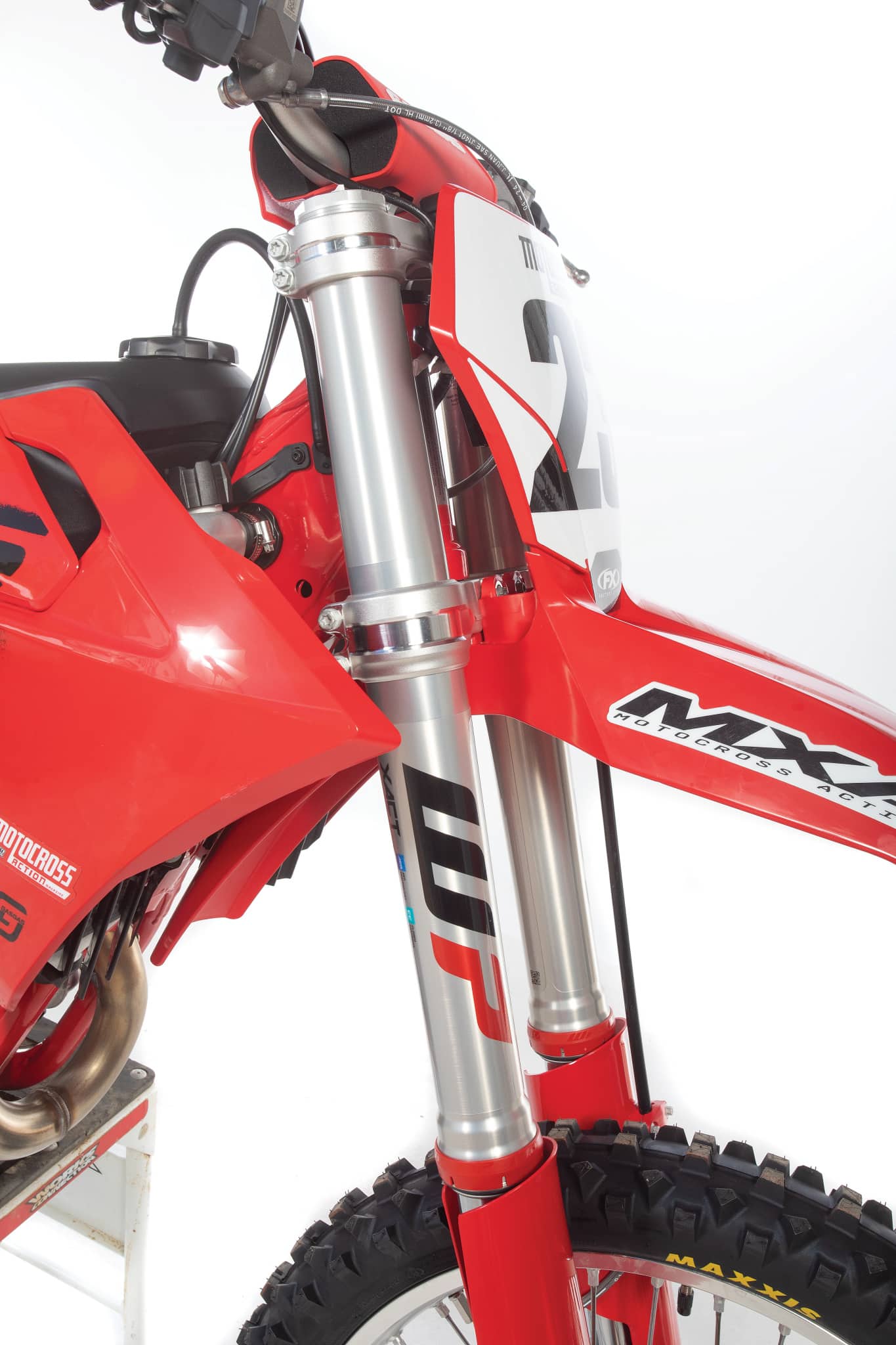 The forged triple clamps are machined to look like split triple clamps.
The forged triple clamps are machined to look like split triple clamps.
(12) Forged triple clamps. The forged triple clamps have been machined to look like split triple clamps. The biggest difference is that the steering stem has been engineered to offer more flex.
(13) Handlebars. The Neken aluminum handlebars are 12mm taller than last year, and the bar bend is proprietary to GasGas. There are also new bar mounts that resist twisting better than last year’s mounts.
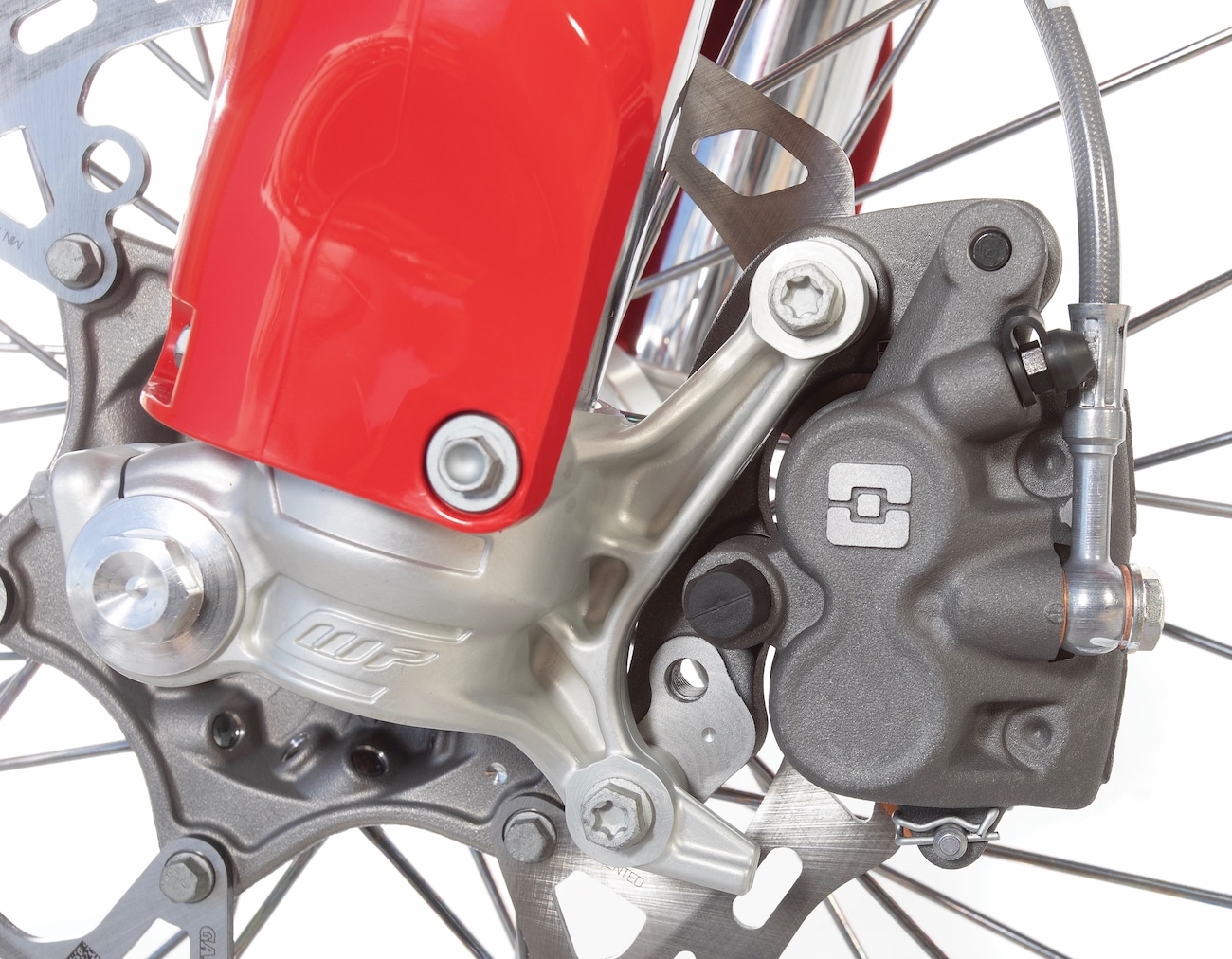 They are manufactured by Brembo, but the Braktek brakes are a money-saving choice.
They are manufactured by Brembo, but the Braktek brakes are a money-saving choice.
(14) Hydraulic systems. The updated front and rear brakes are from Braktec, as is the hydraulic clutch slave unit. The brakes and clutch use Braktec calipers, levers, hoses and rotors.
(15) All-red bodywork. The side panels feature a larger contact patch to help the rider grip the bike better.
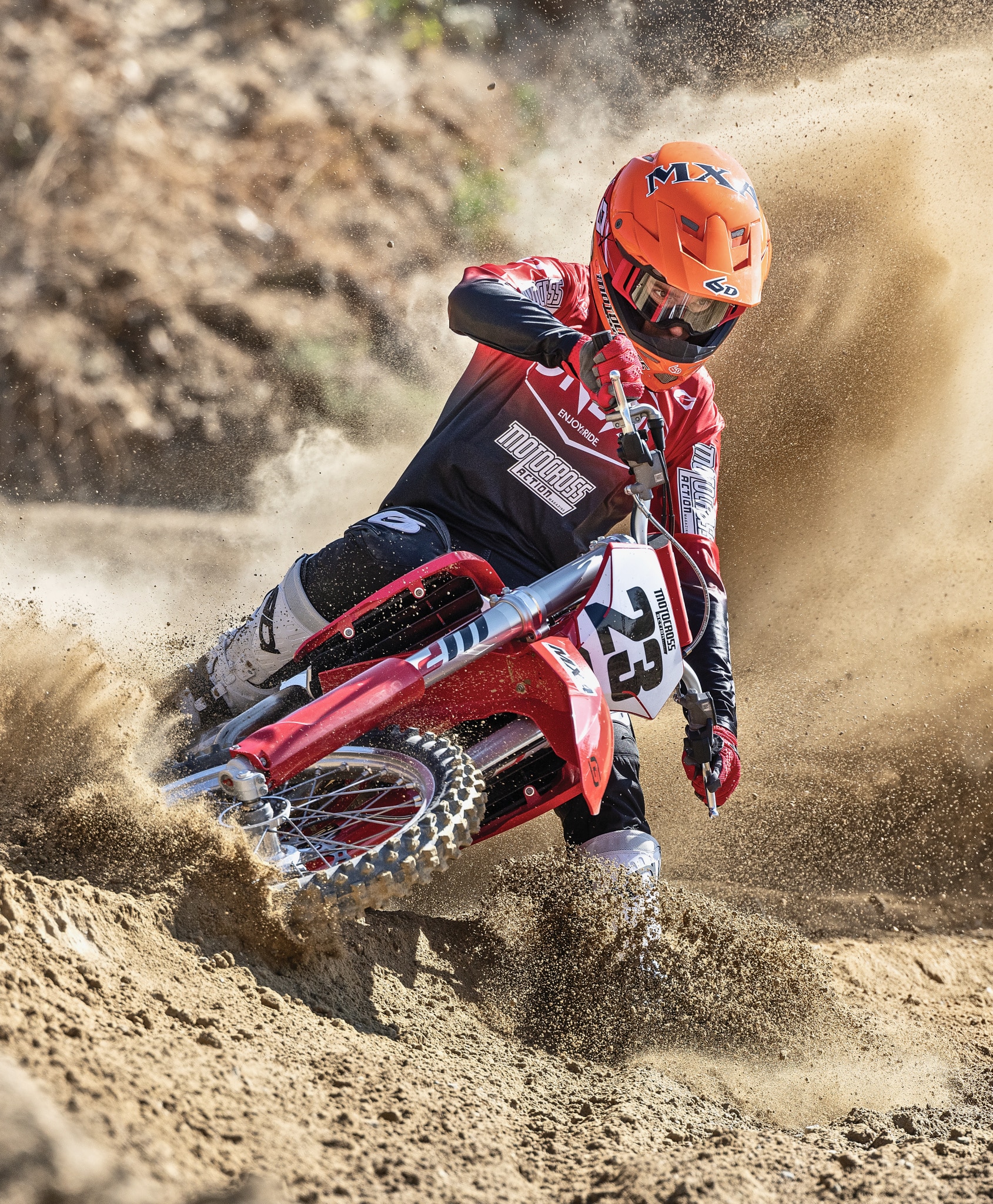
Q: WHAT’S NEW ON THE 2025 GASGAS MC450F SUSPENSION?
A: Forks. Thanks to revisions and refinements to WP XACT air forks over the last few model years, the new forks are a big improvement over the older models. They are valved to be plusher than the KTM version of the WP air forks, and they are not shorter like the Husqvarna version. The GasGas forks are basically Baby Bear’s porridge—not as stiff as on the KTM and not as lowered as on the Husqvarna. Yes, it could be labeled as a vet setup, but vets are a very large part of the motorcycle-buying public. It’s nice that somebody thought of them.
Shock/shock linkage. The biggest rear suspension changes revolve around the all-new shock linkage. The linkage arms were 16.2mm tall on the 2024 model. For 2025, they are 13.6mm tall and 2mm thinner. The shock bolt that attached to the linkage’s bell crank is downsized to 15mm, while the bolt on the other end of the bell crank is reduced to 14mm.
Why all the downsizing of the link arms, bell crank and bolts? GasGas discovered in testing that the 2023–2024 linkage parts were too rigid. The smaller linkage bolts and slimmer linkage arms not only reduce friction, they work in conjunction with the updated smaller rear axle to provide more feedback from the rear wheel.
As for the 2025 shock, it only gets minor updates to the compression valving, largely because the reduced friction and increased flex of the new linkage allow the shock to move more freely, leading them to add a touch more compression damping to the shock.
Q: DOES THE 2025 MC450 GET THE ALL-NEW CONNECTIVITY UNIT?
A: Yes. Although Yamaha has taken the lead over the past few years when it comes to engine tuning via WiFi, GasGas’ new Connectivity Unit can supply beaucoup engine-management options and full-blown analysis through the GasGas+ app. Riders can access different levels of throttle response, traction control, launch control and engine braking, and also engage preset maps for sand, gravel, hardpack and wet dirt.
The 2025 GasGas MC450F can also harness the power of LitPro to collect data about speed, acceleration, deceleration, average speed, G-forces, airtime, jump height, gearing, rpm, throttle position, water temperature and traction control. Best of all, LitPro can use its front-fender-mounted GPS unit to map the track you are riding on and play back the lines you use on every lap. You have to order the special LitPro front fender that the GPS units fits on from your local GasGas dealer.
It should be noted that the GasGas Connectivity Unit Offroad (CUO)doesn’t come on the stock 2025 GasGas MC450F. The CUO unit retails for $249.99, and to access the high-end LitPro features, you must subscribe to LitPro for $69.99 a year from Apple’s App Store or Google Play. You will also need to order the special Connectivity Unit fender to hold the LitPro GPS unit.
If you have a 2023–2024 GasGas, the Connectivity Unit can be retrofit to that model.
Q: HOW DOES THE 2025 GASGAS MC450F RUN ON THE TRACK?
A: The 2025 GasGas MC450F may have started life as an entry-level version of the upscale KTM 450SXF, but the powerband is worth the price of admission. We dynoed our 2025 GasGas MC450F, and it pumped out 57.9 horsepower. That is a very good number, given that without the map switch, it is stuck in the mellow map. It builds its power at an unbelievably progressive rate from 5000 rpm to its peak at 9200 rpm. It’s strong on the bottom, stronger in the middle and strongest on top. Plus, it doesn’t sign off at peak. It is easy to ride and even easier to ride fast.
Unlike a lot of fast bikes, the GasGas remains supremely manageable, torquey, broad, powerful and fun.
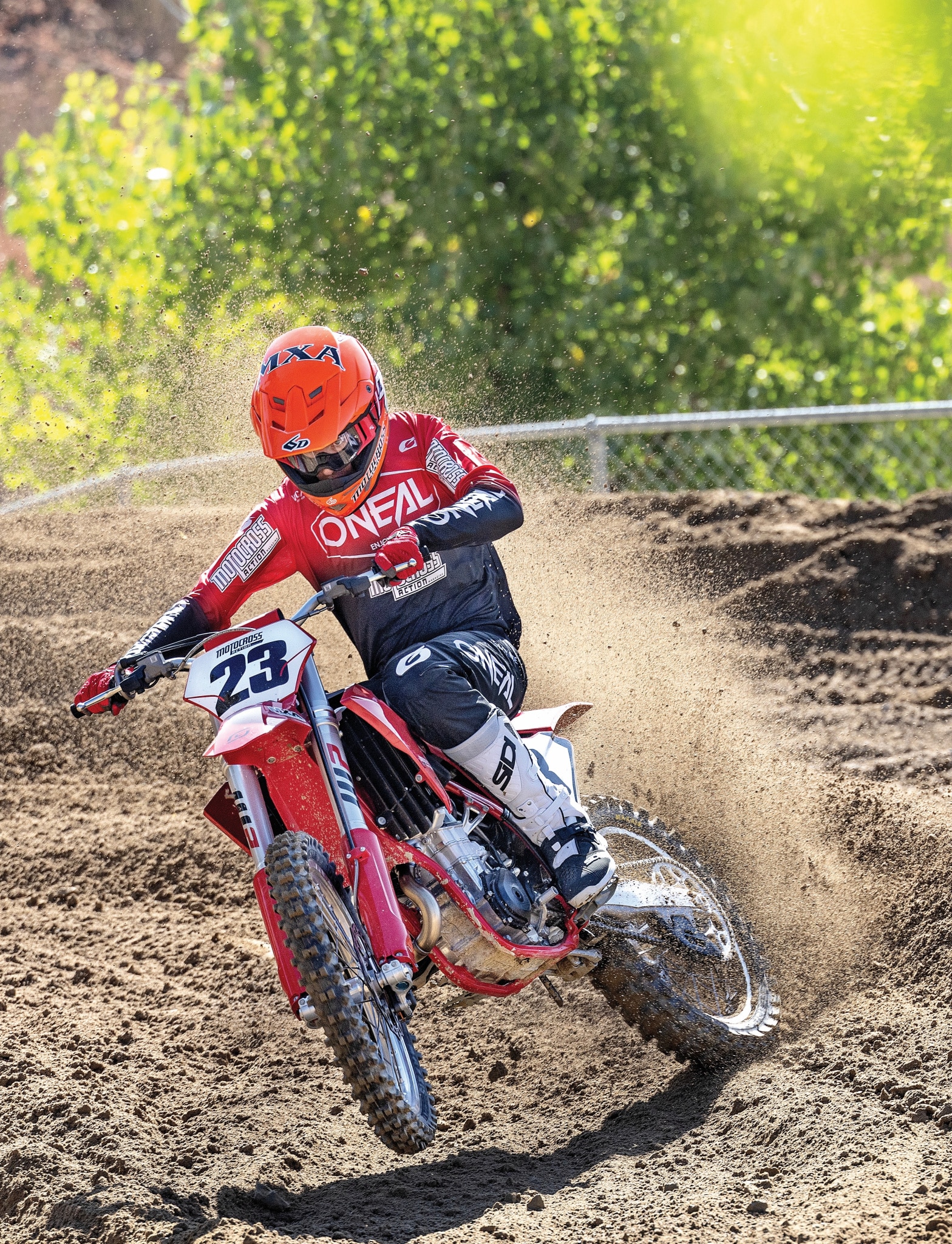 The 2025 GasGas MC450F pumps out just a hair under 58 horsepower—and that’s with only one map choice and no resonance chamber.
The 2025 GasGas MC450F pumps out just a hair under 58 horsepower—and that’s with only one map choice and no resonance chamber.
Q: HOW DOES THE 2025 GASGAS MC450F HANDLE?
A: The MXA test riders always seem to fall in love with the GasGas MC450. MXA test riders, as a group, agree that the 2025 KTM 450SXF was the worthy 2025 MXA 450 Shootout winner, but when it comes time to pick the bike they want to race this weekend, they chose the 2025 GasGas MC450F or Husqvarna FC450. Why? Because those two brands offer goodness without flashiness. They turn in without oversteer. They don’t head-shake at speed, and they have fork and shock settings that best suit vet speed.
Q: WHAT DID WE HATE?
A: The hate list:
(1) Start/stop buttons. If you don’t like having the kill button on the right side of the handlebars, Nihilo Concepts and Ride Engineering make separate start and stop buttons that retro-fit so you can find them.
(2) Chain slack. On the 2025 GasGas MC450F, you need 70mm of chain slack. That translates into four fingers under the chain at the back of the buffer pad. Yes, we know that you have always used three fingers to check your chain tension, but on the 2025 GasGas, you need to use four. The chain is not right if it doesn’t look too loose.
(3) Finding neutral. Getting the transmission into neutral on the starting line is very hard. It resists being snicked into gear. Our solution is to rev the engine with the clutch pulled in, and when the rpm peak, we shift into neutral before the rpm drop.
(4) Gas cap. The gas cap sticks—sometimes to the extent that you can’t get it off at the gas station.
(5) Radiator cap. The plastic radiator cap is a pain to remove. Nihilo Concepts makes a removal tool to make it easier.
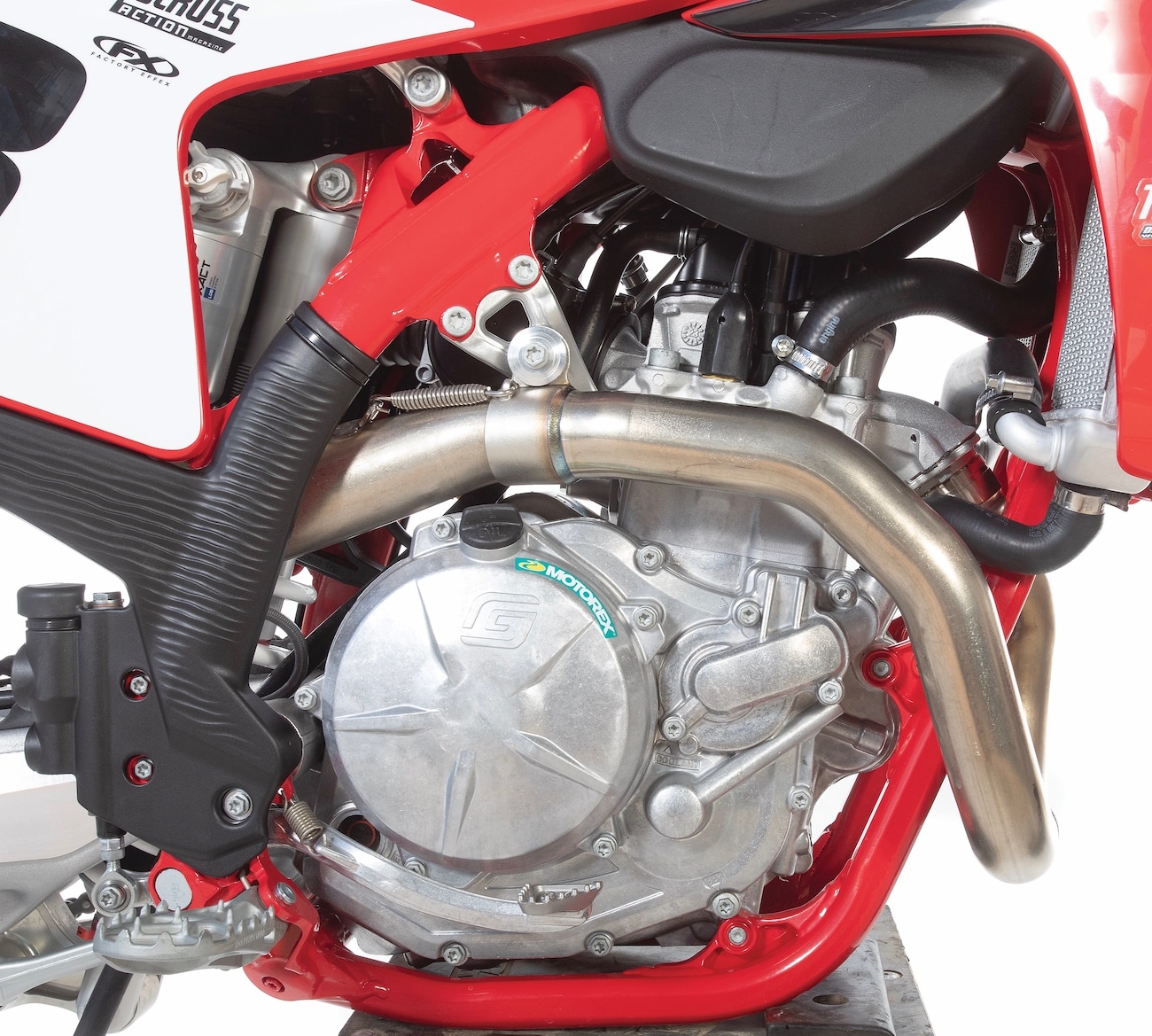 Where did the resonance chamber go?
Where did the resonance chamber go?
(6) Spokes. GasGas’ spokes come loose all the time. If you can’t check all the spokes, be sure to check the spokes closest to the rear rim lock; if those spokes are loose, you need to tighten all the spokes.
(7) Plastic fitment. The stock red plastic doesn’t fit very well. It fits like a set of baggy jeans.
(8) Brakes. The 2025 GasGas uses Braktec brakes and levers and a Braktec clutch slave unit. They are manufactured by Brembo, but they aren’t as good as the Brembo components on the KTM and Husky.
(9) Handlebars. The 2025 handlebars are 12mm taller than last year’s bars. They take a while to get used to, but not more time than it takes to replace them with a lower bend.
(10) Shock clicker access. Kiska is at work again. The right-side panel covers up access to the low- and high-speed compression clickers (the same as on the 2025 Husqvarna FC450). What is the point of having shock clickers that can be adjusted by hand if you can barely get to them. Form follows function.

Q: WHAT DID WE LIKE?
A: The like list:
(1) Shock collar. WP’s latest shock collar is much easier to use and more durable than it was in the past.
(2) Washing. We run Twin Air’s plastic airbox covers to avoid getting water in the engine when cleaning the bikes.
(3) Frame guards. Most MXA test riders like GasGas’ fancy black frame guards, but we have test riders who remove them because the thickness of the plastic pushes their feet outward (if you remove them, you will be surprised by how much narrower the bike feels at your boots).
(4) No-tools clickers. It’s nice that you could adjust the WP shock and forks without ever using a tool. It would be helpful if the Kiska design studio could avoid covering up the shock clickers. The fork clicker could use slightly longer adjustment arms to make it easier for them to be clicked with gloves on.
(5) Red rider. Everybody loves a red bike. The red GasGas pieces don’t fit perfectly, but they look good.
(6) Attention to detail. The electrical and hydraulic lines are all guide through the frame with bolt-on guides.
Q: WHAT DO WE REALLY THINK?
A: The big news is that the 2025 chassis is a step up. We also know that the 2025 GasGas would be better with Brembo brakes. Of course, we miss having the map switch, which would give us access to both maps, launch control, traction control and Quick Shift, but we readily admit that we don’t like Quick Shift and rarely run traction control. What we really wonder is if we are stuck with only one map, why isn’t it the aggressive map? And no one ever asks where the resonance chamber is. Guess what? We can still race, win and have fun on the 2025 GasGas MC450F.



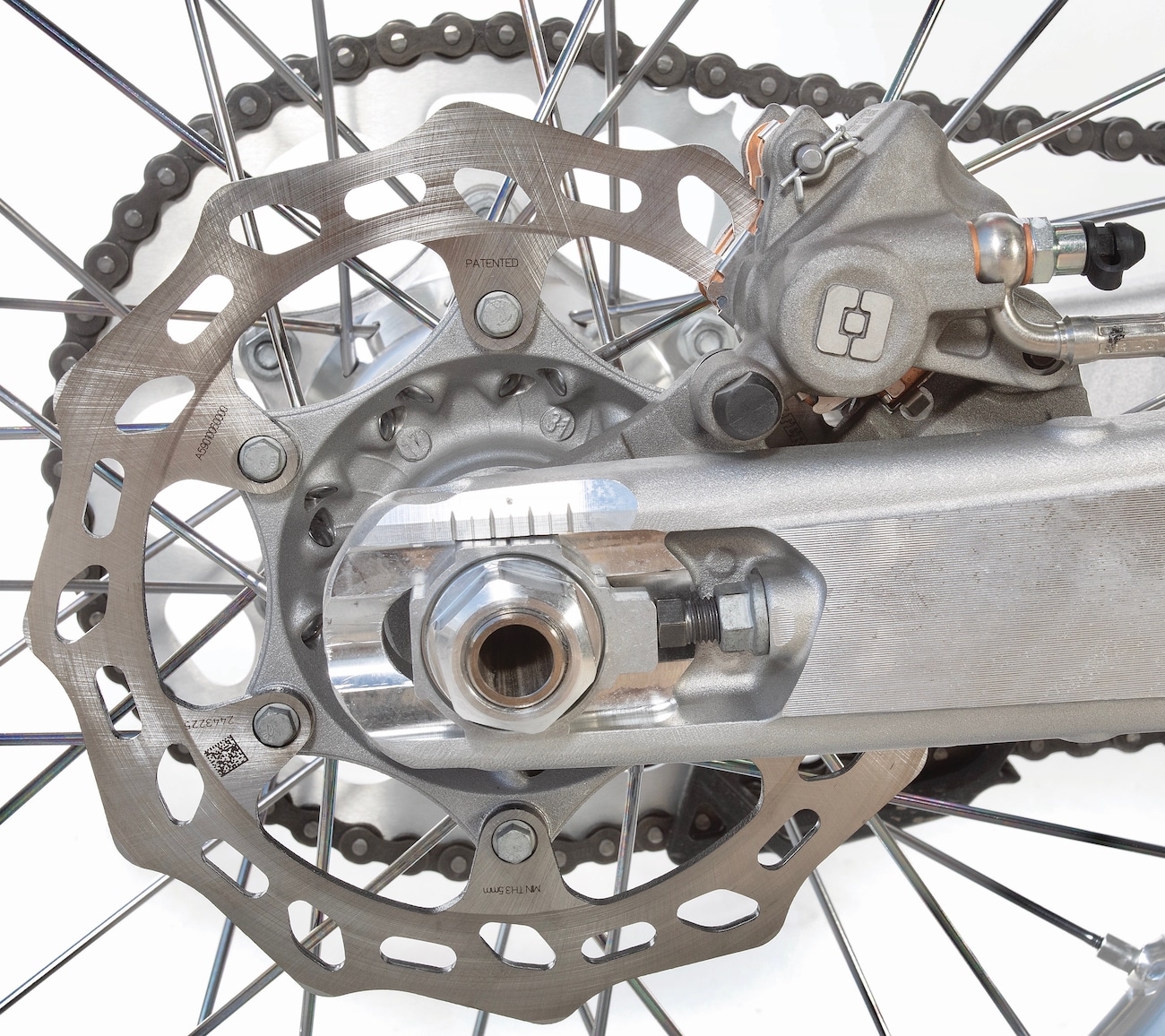

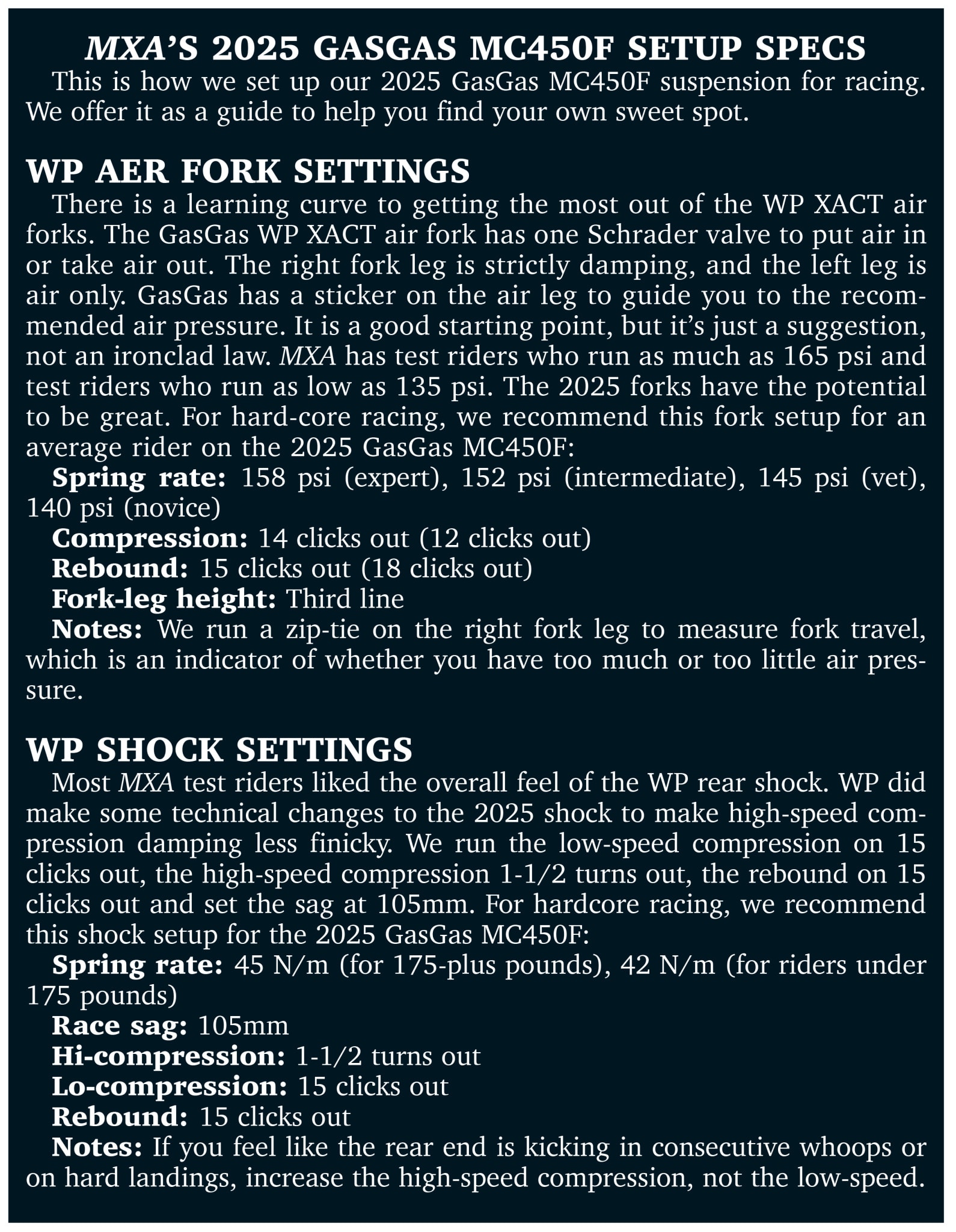



Comments are closed.